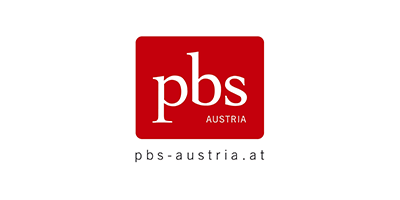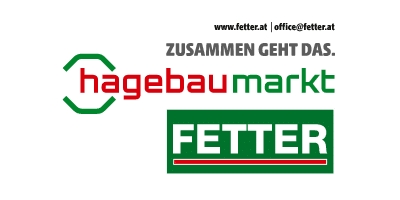DRYKORN Modevertriebs GmbH & Co. KG
CP-Suite at the DRYKORN fashion label
Fashion trends, seasonal products and a complex product range have a decisive influence on planning at the DRYKORN fashion label in Kitzingen. With an absorption costing model, individual overhead allocations, and CP-Suite as its corporate performance management software, the company has brought the necessary transparency and consistency to their budget figures.
Founded in 1996, DRYKORN developed into an international fashion label in just a few seasons. The company has grown dynamically in the last few years, recently declaring a 70% rise in sales within two financial years. Thus, over the years, the fashion house has gone from specialising in trousers to being an all-round supplier with a heterogeneous product structure. The products on offer currently range from scarves for € 19.00 to leather jackets for € 1,499.00. Against this background, it quickly became clear to Gerrit Voss, Commercial Director, that, in the evaluation of the actual data as well as in planning, half-truths would be disastrous. Reliable data on which to base a meaningful plan and forecast were now called for. In accordance with his understanding of corporate performance management – “directing and leading by figures and key ratios” – he was looking to establish transparency and a sound basis for costing. Support was to be provided by a new powerful software program which would clearly depict and analyse the required data. “Excel had been completely exhausted. The main thing was guaranteeing the hundred-per-cent import and a clear presentation of the data from DATEV,” Gerrit Voss says about the requirements of the software solution.
The decision for the Corporate Planning Suite was quickly made. DRYKORN‘s auditor had already come across the program at other clients, and recommended it to Gerrit Voss. A three-man team from Accounting and Corporate Performance Management introduced the software with the help of Ulrich Friggemann, Managing Director of CCS Controlling Consulting and Services, and has been expanding the scope of its deployment ever since.
Absorption costing
DRYKORN‘s heterogeneous product range places particular demands on costing as well as on budgeting. For the planners, contribution margin analysis is not worthwhile. They consider absorption costing to be the measure of all things, and the accurate depiction of all the actual data in the Corporate Planner module delivers the essential information for calculating the overhead rates for each cost centre. The Corporate Planner structures are therefore arranged into cost centres. There are no alternative views; the statements are reduced to the essentials. “I don‘t even try to figure out what cannot be figured out anyway,” Gerrit Voss explains, emphasising his “keep it simple” motto while observing the principles of modern budgeting. Instead, he considers details important when planning the individual values. Planning across all cost centres “by sprinkler” isn‘t an option for him, even despite the customary method in the industry of determining the cost of production by multiplying the purchase price by a factor of X to obtain the sale price. However, the costs at the Kitzingen textiles company are too unevenly distributed and vary between departments. The fashion label has expanded in the last year, particularly in the fields of creativity, product management and model making. These departments are very cost-intensive, give rise to high wage, IT and travel costs, and render their services regardless of the average turnover or the number of customers. That‘s why the CFO approaches the plan in a much more precise manner here, and calculates different overhead rates for each item. The relevant data for doing this are provided by the Corporate Planner module. The exact breakdown of the overhead costs is what makes a sound plan possible in the first place which can be updated reliably, despite or even because of the dynamic market environment.
Planning fashion trends
Knowing today what will be worn in a year‘s time – that too must be reflected in the planning of a business in the textile industry, alongside reliable financial data. Trends cannot always be accurately predicted. The wide product range goes some way towards compensating for this element of uncertainty. Furthermore, the DRYKORN business is able to call on a great wealth of experience. The fashion designers aim always to have an ear to the ground in the market, so as not just to react to trends but also to set them. They can plan in all the more detail. By dividing the year up into Autumn/Winter and Spring/Summer seasonal collections, the period under review and the planning phase can be determined. A review period always lies six or seven months ahead and runs for six months. The Autumn/Winter 2013 season is calculated in December 2012; the relevant fashion fairs take place the following January. Orders arising from these are delivered as of June. Making adjustments for the current season is effectively impossible. This recurring, unchanging rhythm provides a degree of certainty in planning, particularly with the actual figures of the previous year‘s season conveniently ready at hand.
“Since we have been using Corporate Planner, we are always very close to the mark with our plan data. The plan-actual comparison shows variances of more or less two per cent at the most,” Gerrit Voss is pleased by the accuracy of the planning. And that is due to the precise planning method and to accurate, verifiable and consistent figures, from the financial accounts to the forecast. “And also to the excellent overview which Corporate Planner gives me,” the Commercial Director and corporate performance management specialist is convinced, and relies on his figures in good faith.
"Corporate Planner is very adaptable to individual requirements - and not a burial ground for data."
Gerrit Voss
Commercial Director / CFO











